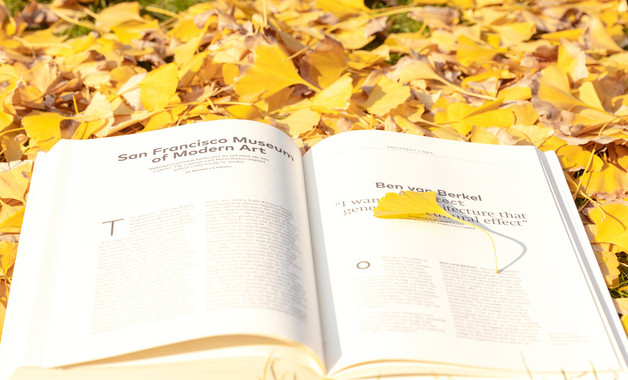小学英语语法总结(十六篇)

【第1篇 小学英语语法知识点总结:情态动词
我们现在学过的情态动词有:can, could, will, would, may, must, should, shall。
情态动词后动词总是用原形。(不受其他任何条件影响)
特征
1)情态动词(modal verb)本身有词义,表示说话人的语气或情态,但词义不完全,不能单独用作谓语动词,一般只能和动词原形一起构成谓语动词。
2)情态动词所表示的情态有:命令、允诺、请求、拒绝、愿望、愿意、义务、必要、可能、能力、敢于、需要等。
3)情态动词(ought除外)和助动词shall,will,should,would一样,后面的动词不定式一般皆不带。
形式变化
1)没有人称和数的变化,第三人称单数的现在时也无变化。如:
i can we can
you can you can
he
they can
she can
it
2)有些情态动词有过去式,有少数过去式和它的原形相同。
a)有过去式的情态动词有:
may -- would
can ―― could
may―― night
shall -- should
have to -- had to
b)过去式不变的情态动词有:
must - must (或had to)
ought to - ought to
need---need
dare - dare(亦可用dared)
3)大多数情态动词后面可用动词的进行式、完成式和被动形式,如:can(may,must)be doing,can(may,must) have done,can(may,must)be done等。
否定式
情态动词和助动词一样,后面可直接跟否定词not。现将情态动词的否定式及其否定式的简略式(简略式用于口语中)列举如下:
shall not--shan‘t [fb:nt]
will not---won’t [weunt]
can not-can‘t [kb:nt]
must not-mustn’t [5mqsnt]
should not-- shouldn‘t
would not-- wouldn’t
could not-- couldn‘t
dare not- daren’t [dzent]
need not-- needn‘t
在疑问句中的用法
情态动词在疑问句中的用法和助动词相同。如:
may i ask you a question? 我可以问你一个问题吗?
can you let me use your dictionary for a minute? 你能把字典借我用一会儿吗?
would you like to visit the heavy machinery plant? 你想参观重型机器厂吗?
注意have to在疑问句中的位置。如:
do you have to go out today? 你今天一定得出去吗?
does he have to finish the work tomorrow? 他明天非做完这项工作不可吗?
【第2篇 小学英语语法总结:一般现在时
英语中的时态一共有八种,它们是:一般现在时、现在进行时、一般过去时、现在完成时、一般将来时、过去进行时、过去完成时、过去将来时。
今天我们所要讲的就是第一种: 一般现在时——表示一般性,经常性的动作或一般性事实。
1、含有be动词的句子
he is a teacher.
the girl is very beautiful.
tim and jack are students.
★变疑问句将be动词移到句首
is he a teacher?
is the girl very beautiful?
are tim and jack students?
★变否定句在be动词后面加not
he is not a teacher.
the girl is not very beautiful.
tim and jack are not students.
★肯定回答及否定回答
yes, he is. / no, he is not.
yes, she is. / no, she is not.
yes, they are. / no, they are not.
2、不含有be动词的句子,即含有一般动词的句子。
(1)第三人称单数及单数名词
he likes books.
she likes him.
the dog likes bones.
★变疑问句在句首加does, 动词变为原型
does he like books?
does she like him?
does the dog like bones?
★变否定句在主语及动词之间加doesn't, 动词变为原型,原句中的动词不再有第三人称变化。
he doesn't like books.
she doesn't like him.
the dog doesn't like bones.
★肯定回答及否定回答:
yes, he does. / no, he doesn't.
yes, she does. / no, she doesn't
yes, it does. / no, it doesn't.
注意:第三人称单数形式一般在动词后面加s,不要和名词复数混淆,变否定句或疑问句时名词复数没有任何变化。
(2)其他人称及复数名词
i want to have a bath.
we have some meat.
the students like smart teachers.
★变疑问句在句首加do
do you want to have a bath?
do we have any meat?
do the students like smart teachers?
★变否定句在主语和动词之间加don't.
you don't want to have a bath.
we don't have any meat.
the students don't like smart teachers.
★肯定回答及否定回答
yes, i do. / no, i don't.
yes, we do. / no, we don't
yes, they do. / no, they don't.
【第3篇 小学英语语法总结:不定代词及不定副词
不定代词及不定副词
some, any, no, every
-thing: something, anything, nothing, everything
-one: someone, anyone, anything, everyone
-where: somewhere, anywhere, anywhere, everywhere
-body: somebody, anybody, nobody, everybody
例子:
1)i looked for my book everywhere, but i can’t find it anywhere.
2)if you want to go somewhere, if you want to be someone, you must wake up.
3)help! somebody? anybody?
4)you are really something. 你真了不起!(口语中常用 'something'来表示“真像回事儿”,“真行”的意思)
5)since everybody is here, let’s begin our class.
6)where did you go? i went nowhere.
7)nobody is at home.
【第4篇 小学英语语法总结:过去进行时
过去进行时主要用于:
表示过去某个时刻或阶段正在进行的动作。
e.g. at that time she was working in a pla unit.
那时她在解放军某部工作。
what were you doing this time yesterday?
与这个时态连用的时间状语常用:
at nine o`clock, this time last night, these days, at that time 等。
用 when 引导的时间状语从句表示主句的动作正在进行的时间。
e.g. when he came in, i was reading a newspaper.
注:
1 、 while 引导时间状语从句叙述过去的动作时,从句常用过去进行时。
e.g. i read a magazine while i was waiting for the bus.
2 、 when 用作并列连词,意为'这时',连接两分句时,第一句多用过去进行时。
e.g. i was reading a newspaper when he came in.
一般过去时与过去进行时的区别:
一般过去时:强调过去某一时间开始或完成的动作。
过去进行时:强调过去某一时间正在进行的动作。
试区别下面两句: we were building a reservoir last winter.
去年冬天我们在修建一座水库。(可能尚未建成) we built a reservoir last winter.
去年冬天我们修建了一座水库。(已经建成)
【第5篇 小学英语语法总结:冠词
一、冠词分类及读法: 英语中冠词有不定冠词和定冠词两种,常放在名词的前面,用来限定名词的意义,起泛指或特指的作用。定冠词the ,不定冠词a/an 二、不定冠词a / an的用法: 不定冠词a / an用在单数名词的前面,a用在辅音开头的词前面; an用在元音开头的词的前面。 a.不定冠词的基本用法: (1) 表示某一个人或东西,但不具体说明何人或何物。如:there is a dog lying on the ground.(有一只狗躺在地上。) (2) 表示某类人或事物,以区别于其他种类。如:a elephant is much stronger than a man.(大象比人强壮多了。)(不能译为:一头大象比一个人强壮。) (2) 表示某类人或事物中的任何一个。如:he is a teacher of english.(他是英语教师。) (4) 表示“一”这个数量。如:there is a table and four chairs in that dining-room.(在那个餐厅里有一张桌子和四把椅子。) (5) 几个用不定冠词的习语:a bit(一点), a little(一点), a few(几个), a lot (许多), a kind of(一种), a pair of(一副、一双), a number of(大量的), a piece of (一张、一片), half an hour(半小时), have a good time(玩得开心), have a cold(感冒), make a noise(发出嘈杂声), have/take a (rest等)(休息)一会儿,等等。 3、定冠词the的用法:定冠词the用在可数名词的单数或复数或不可数的名词前面。 b.定冠词的基本用法: (1) 表示特指的人或事物。如:the man with a flower in his hand is jack..(手上拿着一朵花的男人是杰克) (2) 指谈话双方都熟悉的人或事物。如:look at the blackboard,lily.(莉莉,请看黑板。) (3) 复述前面提到过的人或事物。如:there is a man under the tree. the man is called robert.(树下有个人, 那个人叫罗伯特。) (4) 表示世界上独一无二的事物。如:the earth turns around the sun.(地球绕太阳旋转。) (5) 用在表示方位的名词前面。如:there will be strong wind to the south of the yangtze river.(长江以南地 区将会刮大风。) (6) 在序数词和形容词级的前面。如:who is the first one to go?(谁第一个去?) / of all the stars, the sun is the nearest to the earth.(在所有的恒星之中太阳离地球最近) (7) 常用在乐器名称的前面。如:he began to play the violin at the age of 5.(五岁时他开始拉小提琴) (8) 用在江河、海洋、山脉等名称的前面。如:i have never been to the himalaya mountains.(我从来没有去过喜马拉雅山) (9) 用在含有普通名词的专有名词的前面。如:he is from the united states of america.(他来自美利坚合众国) (10)用在姓氏之前表示一家人。如:the greens are going to mount emei ne_t month.(下个月格林一家要去峨眉山) (11)same之前一般用the。如:lucy and lily look the same.(露西和莉莉看上去长得一样) (12)几个用定冠词的习语:at the same time (与此同时),make the bed(铺床),in the end(最后),all the time(一直),by the way(顺便说一下),on the way(在路上)等等。 c、一些不用冠词的情况: (1) 专有名词和(第一次使用)一些不可数名词时前面通常不用。如:china is a very large country.(中国是个大国) / man needs air and water.(人类需要空气和水) (2) 名词前已有指示、物主或不定代词作定语时不用。如:my pen is much more e_pensive than yours.(我的钢笔比你的昂贵多了) (3) 周名,月名或季节名前一般不用。如:he was born on monday, february 18,1995.(他出生在1995年二月十八日,星期一) / they usually plant trees on the hills in spring.(春天他们通常在山上植树) (4) (第一次使用)复数名词表示人或事物的类别时不用。如:men are cleverer than monkeys.(人比猴子聪明) (5) 三餐饭前不用。如:we have breakfast at home and lunch at school.(我们在家吃早饭,在校吃午饭) (6) 节、假日前一般不用。如:on children’s day the boys often get presents from their parents.(在儿童节,这些男孩经常得到父母的礼物) (7) 球类名词前不用。如:the children play football on saturday afternoons.(孩子们星期六下午踢足球) (8) 城市的重要/主要建筑物名称前不用。如:they are now at people’s cinema.(他们此刻在人民电_) (9) 一些习惯用语中不用。如 at school; at home; on foot; go to school 等
【第6篇 小学英语语法知识点总结:数词
表示数目多少或顺序多少的词叫数词,数词分为基数词和序数词。表示数目多少的数词叫基数词;表示顺序的数词叫序数词。
一、基数词
1)基数词写法和读法: 325 three hundred and twenty-five;
2)基数词一般是单数形式,但下列情况,常用复数:
a. 与of 短语连用,表示概数,不能与具体数目连 用,如scores of people 指许多人;
b. 在一些表示“一排”或“一组”的词组里;
如:they arrived in twos and threes. 他们三三两两的到达了。
c. 表示“几十岁”;
d. 表示“年代”,用 in +the +数词复数;
e. 在乘法运算的一种表示法里,如:3 _ 5 = 15 three fives is (are) fifteen.
二、序数词
序数词的缩写形式: first—1st second—2nd thirty-first—31st
三、 数词的用法
1)倍数表示法
a. 主语+谓语+倍数(或分数)+ as + adj. + as
i have three times as many as you. 我有你三倍那么多。
b. 主语+谓语+倍数(分数)+ the size (amount,length…) of…
the earth is 49 times the size of the moon. 地球是月球的49倍。
c. 主语+谓语+倍数(分数)+ 形容词(副词)比较级+ than…
the grain output is 8 percent higher this year than that of last year.
今年比去年粮食产量增加8%。
d. 还可以用by+倍数,表示增加多少倍
the production of grain has been increased by four times this year.
今年粮食产量增加了4倍。
2)分数表示法
构成:基数词代表分子,序数词代表分母。分子大于1时,分子的序数词用单数,分母序数词用复数:
1/3 one-third ; 3/37 three thirty-sevenths.
【第7篇 小学英语语法总结:need的用法
need的用法
· 表示“需要”时为实意动词,后面可以加名词,也可以加不定式:
i need a pen.
do you need any beer? no, i don’t.
i need to have a rest.
need doing=need to be done (表示被动)
the flowers need watering. =the flowers need to be watered. 花需要浇水。
· need在否定时做情态动词使用:
you needn’t go so early. (=you don’t need to go so early.)
must i clean the desk right now? no, you needn’t.
【第8篇 小学英语语法总结:名词
名词
名词分为可数名词和不可数名词:
1)不可数名词
无法分开的东西:water, tea, bread, milk, rice
抽象的东西:love, beauty, coldness
不可数名词有以下特点:
不能用a, an修饰;
不能加s;
和单数be动词或动词搭配。
2)可数名词
单数可数名词要用冠词修饰,复数可数名词要在名词后面加s。名词复数共有以下几种变化:
· 规则变化的名词复数形式
规则1 一般情况+s e.g. shell→shells book→books
规则2 以s, _, ch, sh结尾+es e.g. fo_→fo_es church→churches, bus→buses, watch→watches
规则3 以o结尾+s或+es e.g. potato→potatoes, negro→negroes, hero→heroes, tomato→tomatoes,(口诀:黑人英雄爱吃土豆和西红柿),剩下一般加s, radio→radios
规则4 以f, fe结尾的,变f, fe为ves e.g. life→lives half→halves, shelf→shelves, city→cities, wife→wives
规则5 以辅音字母+y结尾, 变y为i+es e.g. sky→skies fly→flies
· 不规则变化的名词复数形式
man(men) woman(women) foot(feet) goose(geese) tooth(teeth)
child(children) sheep(sheep) deer(deer) mouse(mice) fish(fish)
【第9篇 小学英语语法必备:冠词用法总结
一.冠词概述 冠词是虚词,本身不能单独使用,也没有词义,它用在名词的前面,帮助指明名词的含义. 冠词分为不定冠词和定冠词两种。不定冠词仅用在单数可数名词前面,表示“一”的意义,但不强调数目观念,只表示名词为不特定者。 定冠词则表示名词为特定者,表示“这”,“那”,“这些”,“那些”的意思,在可数的单复数名词或不可数名词前面都可以用 二.a和an的区别 不定冠词有a和an两种形式,a用于辅音(不是辅音字母)开头的词前,an用于元音(不是元音字母)开头的词前。 例如:a boy,a university,a european country; an hour,an honour,an island,an elephant,an umbrella 三.不定冠词的用法 1.泛指某一类人、事或物;相当于any,这是不定冠词a/an的基本用法。 2.泛指某人或某物,但不具体说明何人或何物。 3.表示数量,有“一”的意思,但数的概念没有one强烈。 4.表示“每一”,相当于every. 例如,i go to school five days a week.我一周上五天课。 5.用在序数词前,表示“又一”,“再一”。例如,i have three books. i want to buy a fourth one.我已经有三本书,我想买第四本。 6.用在某些固定词组中:a lot(of)许多,大量;after a while过一会儿 四.定冠词的用法 1.特指某(些)人或某(些)物,这是定冠词的基本用法。 2.指谈话双方都知道的人或事物。例如:open the window,please.请打开窗户。 3.指上文已经提到的人或事物。例如:i have a car. the car is red.我有一辆小汽车,它是红色的。 4.指世界上独一无二的事物。 例如:which is bigger,the sun or the earth?哪一个大,太阳还是地球? 5.用在序数词,形容词级前。例如:the first lesson is the easiest one in this book.第一课是这本书最简单的一课。 6.用在由普通名词构成的专有名词前。例如,the great wall 长城,the united states美国 7.用在某些形容词前,表示某一类人。例如:the poor穷人,the blind盲人 8.用在姓氏复数形式前,表示“全家人”或“夫妻俩”。例如:the greens 格林一家或格林夫妻俩 9.用在方位词前。例如:on the left在左边,in the middle of在中间 10.用在乐器名称前。例如:she plays the piano every day.她每天弹钢琴。 11.用在表示海洋,河流,山脉,群岛及国家和党派等名词前。 例如:the black sea黑海,the yangzi river长江 12.用在某些固定词组中:all the same仍然;all the time一直;at the moment此刻;at the same time同时;by the way顺便说;do the shopping/washing买东西/洗衣服;in the morning/afternoon/evening 在上午/下午/晚上;in the open air 在户外,在野外 五.零冠词的用法 1.在专有名词和不可数名词前。例如,class two二班,tian’an men square天安门广场,water水 2.可数名词前已有作定语的物主代词(my,your,his,her等)、指示代词(this/these,that/those)、不定代词(some,any等)及所有格限制时。 例如my book(正);my the book(误) 3.复数名词表示一类人或事物时。 例如,they are teachers.他们是老师。 tigers like meat.老虎喜欢吃肉 4.在星期,月份,季节,节日前。例如:on sunday在周日,in march在三月,in spring在春天,on women’s day在妇女节 (特例:如果月份,季节等被一个限定性定语修饰时,则要加定冠词:he joined the army in the spring of 1982.他在1982年春季参军。) 5.在称呼语或表示头衔的名词前。例如:tom汤姆,mum妈妈 6.在学科名称,三餐饭和球类运动名称前。例如:i have lunch at school every day. 特例:当football,basketball指具体的某个球时,其前可以用冠词:i can see a football.我可以看到一只足球。where’s the football?那只足球在哪儿?(指足球,并非“球类运动”) 7.在表特定的公园,街道,车站,桥,学校等之前。例如:no.25 middle school 8.某些固定词组中不用冠词。 (1)与by连用的交通工具名称前:by bus乘公共汽车;by car乘汽车;by bike骑/坐自行车;by train乘火车;by air/plane乘飞机;by sea/ship乘船,但take a bus,in a boat,on the bike前需用冠词 (2)名词词组:day and night日日夜夜;brother and sister兄弟姐妹;hour after hour时时刻刻;here and there到处 (3)介词词组:at home在家;in surprise惊奇地;at noon在中午;on foot步行;at night在晚上;on duty值日;at work在工作;on time准时;for e_ample例如;in class在上课;on show展览;in bed在床上 (4)go短语:go home回家;go to bed上床睡觉;go to school去上学;go to work去上班;go shopping/swimming/boating/fishing去买东西/游泳/划船/钓鱼 六.用与不用冠词的差异 in hospital住院/in the hospital在医院里 go to sea出海/go to the sea去海边 on earth究竟/on the earth在地球上,在世上 in front of在……(外部的)前面/in the front of在……(内部的)前面 take place发生/take the place(of)代替 at table进餐/at the table在桌子旁 by sea乘船/by the sea在海边 in future从今以后,将来/in the future未来 go to school(church…)上学(做礼拜…)/go to the school(church…)到学校(教堂…)去 on horseback骑着马/on the horseback在马背上 two of us我们当中的两人/the two of us我们两人(共计两人) out of question毫无疑问/out of the question不可能的,办不到的 ne_t year明年/the ne_t year 第二年 a teacher and writer一位教师兼作家(一个人)/a teacher and a writer一位教师和一位作家(两个人
【第10篇 小学英语语法总结:动词的变化
1)代词及be动词
主格 i we you you she/he/it they
宾格 me us you you her/him/it them
代词所有格 my our your your her/his/its their
名词性代词 mine ours yours yours hers/his/its theirs
be动词现在时 am are are are is are
be动词过去时 was were were were was were
2)名词的复数
规则变化的名词复数形式
规则1 一般情况+s e.g. shell→shells toy→toys
规则2 以s, _, ch, sh结尾+es e.g. fo_→fo_es church→churches
规则3 以o结尾+s或+es e.g. radio→radios potato→potatoes
规则4 以f, fe结尾的,变f, fe为ves e.g. life→lives half→halves
规则5 以辅音字母+y结尾, 变y为i+es e.g. sky→skies study→studies
3)动词的第三人称单数形式
规则1 一般情况+s e.g. like-likes, look-looks
规则2 以s, _, ch, sh和o结尾+es e.g. do-does, catch-catches
规则3 以辅音字母+y结尾, 变y为i+es e.g. carry-carries, fly-flies
4)动词现在分词
规则1 一般动词加-ing e.g. look-looking, read-reading, play-playing
规则2 以不发音的字母结尾的单词去e加-ing e.g. make-making, take-taking, arrive-arriving
规则3 重读闭音节词结尾, 即单词中只有一个元音字母,其后紧跟一个辅音字母的词,双写辅音字母再加-ing e. g. run-running, sit-sitting, get-getting, swim-swimming, stop-stopping
5)动词过去式
规则动词变化
规则1 一般动词加-ed e.g. look-looked, watch-watched, play-played
规则2 以e结尾的加-d e.g. make-maked, arrive-arrived
规则3 以辅音字母y结尾的变y为i加-ed cry-cried, carry-carried
规则4 重读闭音节词结尾, 即单词中只有一个元音字母,其后紧跟一个辅音字母的词,双写辅音字母再加-ed stop-stopped
过去式的读音
在清辅音后面(除外)读/t/ e.g. walked, jumped
在浊辅音和元音后读/d/ e.g. washed, watched
在/t/,/d/后读/id/ e.g. waited, hated
6)形容词和副词的比较级和级
比较级
规则1 一般加-er e.g. high-higher
规则2 以e结尾加-r nice-nicer
规则3 以辅音字母加y结尾,变y为i再加-er busy-busier
规则4 重读闭音节结尾, 双写辅音字母再加-er fat-fatter
级
规则1 一般加-est e.g. high-highest
规则2 以e结尾加-st nice-nicest
规则3 以辅音字母加y结尾,变y为i再加-est busy-busiest
规则4 重读闭音节结尾, 双写辅音字母再加--est fat-fattest
7)常见缩写:
is='s i am=i'm are='re
is not=isn't /iznt/ are not=aren't /a:nt/
do not=don't
does not=doesn't
was='s
did not=didn't
can not=can't
have='ve
has='s
have not=haven't
has not=hasn't
will='ll
will not=won't
shall not=shan't
【第11篇 小学英语语法总结:祈使句
祈使句表示请求或命令别人做某事或不要做某事。
肯定式:
以动词原形开头(有时有please)
否定式:
don't+动词原形开头(有时有please)
如:
be careful!
please open your books.
let me have a try.
don’t open the door.
注意:
把祈使句改为否定句只需在动词前加don't即可。
【第12篇 小学英语语法总结:情态动词的使用
情态动词的使用
1)情态动词can(能够),must(必须),may(可以)
结构:主语+can/must/may+动词原型
he can make the tea.
sally can air the room.
we can speak english.
★变疑问句将情态动词移到句首
can he make the tea?
can sally air the room?
can we speak english?
★变否定句在情态动词后面加not
he cannot make the tea.
sally cannot air the room.
we cannot speak english.
★肯定回答及否定回答
yes, he can. / no, he cannot.
yes, she can. / no, she cannot.
yes, we can. / no, we cannot.
★特殊疑问句:(必背)
what can you do?
注意:情态动词的句子没有第三人称单数的变化,不要在情态动词或动词后面加s。
2)must/have to的区别
must 表示必须,是主观上觉得应该做,have to是不得不,是由于客观条件逼迫的必要要做
must 只能用在表示现在和将来的句子里,而have to do可以用在任何时态
3)must, may, might表示猜测:
· must do 表示对现在事实的猜测
· must have done表示对过去事实的猜测
· must have been doing 表示对过去正在进行的事实的猜测
· may/might do, may/might have done表示没有任何事实依据的猜测,might的可能性更小。
4)can't/couldn't 表示不可能
【第13篇 小学英语语法知识点总结:形容词
形容词的比较级
1、形容词比较级在句子中的运用:两个事物或人的比较用比较级,比较级后面一般带有单词than。比较级前面可以用more, a little 来修饰表示程度。than后的人称代词用主格(口语中可用宾格)。
2.形容词加er的规则:
⑴一般在词尾加er ;如:tall-taller
⑵以字母e 结尾,加r ;fine- finer
⑶以辅音字母加一个元音字母和一个辅音字母结尾(除ow结尾),应双写末尾的辅音字母,再加er ;如:big-bigger
⑷以“辅音字母+y”结尾,先把y变i,再加er 。如;happy- happier
(5)两个音节或两个以上的音节的,在原级前加more 如:beautiful-more beautiful
3.不规则形容词比较级:
good/well-better, bad/ill – worse , much /many –more , little –less, few – fewer , far –further
【第14篇 小学英语语法总结:倒装句
倒装句:so/neither的倒装
eg: he can swim. so can i.
she didn't go to class. neither did i.
结构:
so/neither+be+ 主语
so/neither+助动词+ 主语
so/neither+情态动词+ 主语
助动词:
一般现在时: do, does/am, is, are
现在进行时: am, is, are
一般过去时: did
现在完成时: have, has
一般将来时: will, shall
过去进行时: was, were
过去完成时: had
过去将来时: would
【第15篇 小学英语语法介词总结
小学英语介词at,in与on在时间方面的用法:
at表示时间的一点;in表示一个时期;on表示特殊日子。如:
he goes to school at seven o'clock in the morning. 他早晨七点上学。
can you finish the work in two days. 你能在两天内完成这个工作吗?
linda was born on the second of may. 琳达五月二日出生。
1>. at后常接几点几分,天明,中午,日出,日落,开始等。如:
at five o'clock (五点),at down (黎明),at daybreak (天亮),at sunrise (日出),at noon (中午),at sunset (日落),at midnight (半夜),at the beginning of the month (月初), at that time (那时),at that moment (那会儿),at this time of day (在一天的这个时候)。
2>. in后常接年,月,日期,上午,下午,晚上,白天,季节,世纪等。如:
in 2023(2023年),in may,2023 (2023年五月),in the morning (早晨/上午),in the afternoon (下午),in the evening (晚上),in the night (夜晚),in the daytime (白天),in the 21st century (21世纪),in three days (weeks/month)三天(周/个月),in a week (一周),in spring (春季)。
3>. on后常接某日,星期几,某日或某周日的朝夕,节日等。如:
on sunday (星期日),on a warm morning in april (四月的一个温暖的上午),on a december night (12月的一个夜晚),on that afternoon (那天下午),on the following night (下一个晚上),on christmas afternoon (圣诞节下午),on october 1,1949 (1949年10月1日),on new year's day (新年),on new year's eve (除夕),on the morning of the 15th (15日的早上)等。
【第16篇 小学英语语法知识点总结:现在进行时
动词加ing的变化规则
1.一般情况下,直接加ing,如:cook-cooking
2.以不发音的e结尾,去e加ing,如:make-making, taste-tasting
3.如果末尾是辅音字母加一个元音字母和一个辅音字母,双写末尾的辅音字母,再加ing,如:run-running, stop-stopping
现在进行时,用来表示正在进行或发生的动作。结构是:be (am, is, are)+动词现在分词形式,几种句型:
一、陈述句(肯定句)
主语+be (am, is, are)+现在分词,如:
i am reading english.我正在读英语。
he is writing.他正在写字。 you are running.你正在跑步。
二、一般疑问句
be(am, is, are)+主语+现在分词, 如:
1. -are you singing?你正在唱歌吗? -yes, i am.是的,我在唱歌。
(no, i'm not.不,我不在唱歌。)
2. -is he (she) listening to music?他(她)在听音乐吗?
-yes, he (she) is.是的,他(她)在听音乐。
[no, he (she) isn't.不,他(她)不在听音乐。]
三、特殊疑问句
疑问词+be (am, is, are)+主语+现在分词,如:
1. -what are you doing?你正在干什么?
-i am doing my homework.我正在做作业。
2. -what is he (she) doing?他(她)正在干什么?
-he (she) is riding a bike.他(她)正在骑自行车。
与现在进行时连用的词:look(看)、listen(听)、now(现在),
look! jack is swimming.看!杰克正在游泳。
listen! she is singing.听!她正在唱歌。
i am cleaning my room now.现在我正在打扫房间。
相关总结
-
83位用户关注
最新加入范文
-
82位用户关注
-
77位用户关注
-
40位用户关注
-
70位用户关注
-
14位用户关注
-
67位用户关注





